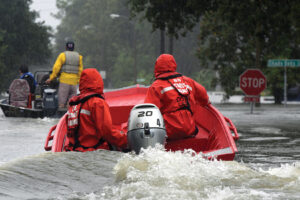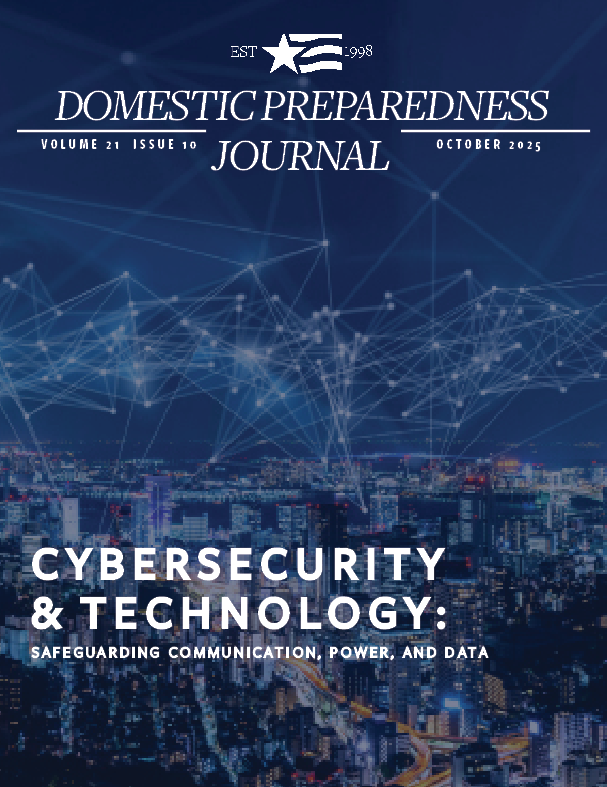Today's Top Picks

Podcast – Put a Parsec on It: Off-Grid Connectivity for First Responders
Through partnerships with Verizon, Ericsson, and CAL FIRE, Parsec develops antenna technology that extends communication reach and strengthens reliability when infrastructure is down or distant. This discussion with Michael Neenan highlights real-world examples where improved connectivity has supported operations at the border, during wildfires, and across rural communities, showing how dependable communication can ultimately save lives.

The Data Center Dilemma: Understanding America’s New Grid Challenge
The rise of data centers is reshaping the risk landscape for the electric grid. Now, essential infrastructure supporting hospitals, communications, finance, and government, data centers are vulnerable to – and potential drivers of – cascading failures when grid reliability falters. The real task now is to provide enough oversight to keep the grid stable and fair without stifling innovation.

Visualize the Data: How One Airport Prioritizes Its Emergency Plans
Every jurisdiction faces the challenge of managing and prioritizing its preparedness efforts. Hartsfield-Jackson Atlanta International Airport has developed an innovative formula designed to simplify that process. Built to work with data visualization software, this flexible model is adaptable for any jurisdiction and helps organizations identify priorities, allocate resources efficiently, and strengthen readiness across all emergency plans.

Green Energy Battery Storage and Impacts on First Responders
The stored-energy field is growing rapidly, and battery energy storage systems are expected to continue strengthening the nation’s grid. However, these systems introduce new risks—hard-to-extinguish fires and chemical exposure that endangers first responders. Awareness and specialized training are essential to manage these new hazards in a dynamic and dangerous environment.

Raw Materials: The Risk to Disaster Recovery
Disaster recovery rarely centers on the materials that make rebuilding possible. Modern infrastructure depends on fragile, geopolitically concentrated supply chains ill-suited for post-disaster demand. Recovery must increasingly hinge not just on leadership and logistics, but on the ability to rapidly secure and deliver the critical raw materials communities need to rebuild.

Podcast – A Power Dilemma: The Benefits and Safety Challenges of Lithium-Ion Batteries
One of the fastest-growing challenges in emergency response is the use of lithium-ion batteries, which are revolutionizing the way people power daily activities but introducing unique and dangerous risks when things go wrong. In this conversation, Gordon Lohmeyer from the Texas A&M Engineering Extension Service shares the latest research to improve protection for those on the front lines and communities across the country.
Trending
 FIFA, Terrorism, and Preparedness for the 2026 World… by Adam Johnson The quadrennial championship of the most popular game in the world—soccer—is coming to the United States in 2026, and fans…
FIFA, Terrorism, and Preparedness for the 2026 World… by Adam Johnson The quadrennial championship of the most popular game in the world—soccer—is coming to the United States in 2026, and fans… The Evolving Landscape of Domestic Extremism by Richard Schoeberl Extremism in its many forms remains a growing threat in the U.S. There is heightened concern about ongoing violent extremist…
The Evolving Landscape of Domestic Extremism by Richard Schoeberl Extremism in its many forms remains a growing threat in the U.S. There is heightened concern about ongoing violent extremist… Civil Defense: The Unseen Pillars of Preparedness by Stephen Kastensmidt, Scott C. Lanham and John T. “Tim” Briery Core to homeland security are institutions such as active-duty military, the National Guard, FEMA, and local first responders. Complementing these…
Civil Defense: The Unseen Pillars of Preparedness by Stephen Kastensmidt, Scott C. Lanham and John T. “Tim” Briery Core to homeland security are institutions such as active-duty military, the National Guard, FEMA, and local first responders. Complementing these… A Sixth Framework? Civil Defense and the Future of… by George M. Schwartz Comprehensive emergency management in the U.S. evolved from World War II and Cold War-era civil defense, but today, civil defense…
A Sixth Framework? Civil Defense and the Future of… by George M. Schwartz Comprehensive emergency management in the U.S. evolved from World War II and Cold War-era civil defense, but today, civil defense…Trending
 Civil Defense: The Unseen Pillars of Preparedness by Stephen Kastensmidt, Scott C. Lanham and John T. “Tim” Briery Core to homeland security are institutions such as active-duty military, the National Guard, FEMA, and local first responders. Complementing these…
Civil Defense: The Unseen Pillars of Preparedness by Stephen Kastensmidt, Scott C. Lanham and John T. “Tim” Briery Core to homeland security are institutions such as active-duty military, the National Guard, FEMA, and local first responders. Complementing these… A Sixth Framework? Civil Defense and the Future of… by George M. Schwartz Comprehensive emergency management in the U.S. evolved from World War II and Cold War-era civil defense, but today, civil defense…
A Sixth Framework? Civil Defense and the Future of… by George M. Schwartz Comprehensive emergency management in the U.S. evolved from World War II and Cold War-era civil defense, but today, civil defense… FIFA, Terrorism, and Preparedness for the 2026 World… by Adam Johnson The quadrennial championship of the most popular game in the world—soccer—is coming to the United States in 2026, and fans…
FIFA, Terrorism, and Preparedness for the 2026 World… by Adam Johnson The quadrennial championship of the most popular game in the world—soccer—is coming to the United States in 2026, and fans… The Evolving Landscape of Domestic Extremism by Richard Schoeberl Extremism in its many forms remains a growing threat in the U.S. There is heightened concern about ongoing violent extremist…
The Evolving Landscape of Domestic Extremism by Richard Schoeberl Extremism in its many forms remains a growing threat in the U.S. There is heightened concern about ongoing violent extremist…Trending
FIFA, Terrorism, and Preparedness for the 2026 World… by Adam Johnson The quadrennial championship of the most popular game in the world—soccer—is coming to the United States in 2026, and fans…
The Evolving Landscape of Domestic Extremism by Richard Schoeberl Extremism in its many forms remains a growing threat in the U.S. There is heightened concern about ongoing violent extremist…
Civil Defense: The Unseen Pillars of Preparedness by Stephen Kastensmidt, Scott C. Lanham and John T. “Tim” Briery Core to homeland security are institutions such as active-duty military, the National Guard, FEMA, and local first responders. Complementing these…
A Sixth Framework? Civil Defense and the Future of… by George M. Schwartz Comprehensive emergency management in the U.S. evolved from World War II and Cold War-era civil defense, but today, civil defense…
Domestic Preparedness Journal
Featured in this issue
- Digital and Real-World Emergencies Collide
- Response to Autonomous Vehicle Incidents
- Securing Food & Agriculture Supply Chains
- Why AI Must Include Community Voices
- Cyber Response: From Server to Situation Room
- Cybersecurity for Next Gen 911
- Crafting Warning Messages With Generative AI
- The Cyber-Insecurity of Medical Devices
- A Victim-Centered Approach to Mass Violence
- Harnessing AI & GIS
- Integrating Cybersecurity Into ICS
Articles Out Loud

The Data Center Dilemma: Understanding America’s New Grid Challenge
November 12, 2025
The rise of data centers is reshaping the risk landscape for the electric grid. Now, essential infrastructure supporting hospitals, communications,

Visualize the Data: How One Airport Prioritizes Its Emergency Plans
November 12, 2025
Every jurisdiction faces the challenge of managing and prioritizing its preparedness efforts. Hartsfield-Jackson Atlanta International Airport has developed an innovative

